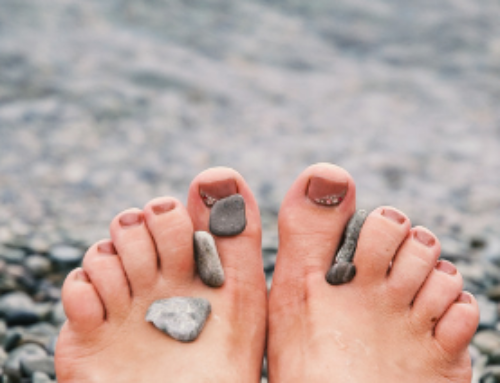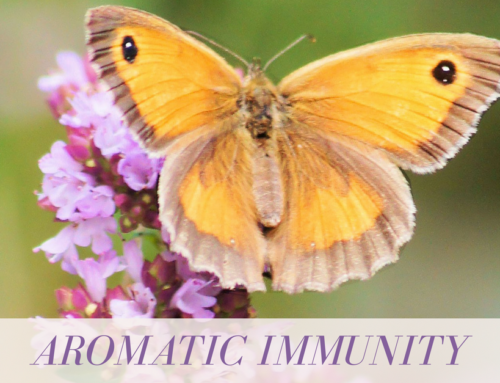Essential oils are generally considered safe and harmless when certain guidelines are observed. These guidelines generally include recommendations to:
- Dilute in vegetable oil prior to applying to skin
- Refrain from lengthy exposure
- Rotate through several essential oils instead of using the same one or two daily for weeks on end
- Observe special considerations like photoxicity, drug interactions, population contraindications
Today I want to talk with you about one of those special considerations which can prove to have some very unwanted outcomes when ignored: photoxicity.
A woman recently posted this alarming outcome on Facebook after applying undiluted essential oils to her throat and wrist areas, going for a hot yoga class, and then spending time in a tanning bed.
What is a phototoxic reaction?
The Skin Cancer Foundation describes this phenomenon thusly:
Phototoxic reactions are the result of a release of energy by photosensitizing agents, causing potentially long term damage to the skin surrounding these molecules. This excessive energy is initially absorbed by the molecules from the sun’s ultraviolet rays, explaining how sunlight can indirectly result in the death of skin cells. Although the medication or agent that causes the reaction might be stopped quickly, such a reaction can occasionally last 20 years after the substance has been removed. Medications that are taken orally, topically (i.e. a cream applied to the skin) or injected can all cause phototoxic reactions.
The New England Journal of Medicine has a case study of a woman who experience phototoxic dermatitis after receiving a facial with essential oils:
Phototoxic dermatitis is an inflammatory, photochemically evoked skin reaction caused by concomitant exposure to sun and photosensitizing substances (furocoumarins are one such group), which increase the reactivity of the skin to ultraviolet radiation.
What essential oils are phototoxic and should I avoid them?
Only a handful of essential oils are known photosensitizers. As the NEJM quote above references, furocoumarins, also known as furanocoumarins, are one class of constituents found in essential oils. Furanocoumarins are found in many cold-pressed, or expressed, citrus essential oils like Bergamot, Lime, Lemon, and Grapefruit.
It may not be necessary to completely avoid these essential oils unless one is currently using medication that also contain phototoxic substances, like some antibiotics, NSAIDs, and heart medications. However, these phototoxic essential oils need to be diluted to keep the furanocoumarin levels very low to prevent a reaction. The International Fragrance Association (IFRA) based in Geneva, Switzerland helps our collective industries self-regulate and they offer specific guidelines for topical products (cosmetics, perfumes, massage oil) that contain phototoxic substances.
IFRA guidelines for select expressed essential oils:
- Bergamot (Citrus bergamia) essential oil has a maximum dermal dilution of 0.4%
- Lime (Citrus x aurantifolia) essential oil has a maximum dermal dilution of 0.7%
- Lemon (Citrus x limon) essential oil has a maximum dermal dilution of 2.0%
- Grapefruit (Citrus x paradisi) essential oil has a maximum dermal dilution of 4.0%
If you’re planning on using phototoxic essential oils in a wash-off product you can exceed these guidelines.
This new study looks at the increased risk of skin cancer when consuming furanocoumarins orally via citrus products. My aromatic medicine mentor cautions about the increased risk of a phototoxic reaction when orally dosing essential oils high in furanocoumarins. Which is just one more reason the practice of consuming lemon essential oil in a glass of water is risky business.
Diluting Essential Oils
As may be obvious by now the woman with the severe phototoxic essential oil reaction would not have experienced such a response if she had avoided an undiluted application and followed current guidelines for safe dermal use of the oils she used.
As a practicing, clinically-trained aromatherapist, I urge my clients to follow current dermal application guidelines to reduce their chances of experiencing toxicity from a high-dose application as well as prevent sensitization from repeated exposure of the same aromatic compounds. By utilizing a vegetable oil like jojoba, coconut, or sweet almond we also prevent the rapid evaporation of certain aromatic compounds so we can get a more accurate therapeutic application to skin instead of inadvertently vaporizing the entire room.
Further reading:
- Opinion of the Scientific Committee on Furanocoumarins in Cosmetic Products – European Commission
- Phototoxicity and Essential Oils – Aromaweb
- Essential Oil Dilution Chart – Tisserand Institute
- Guide to Diluting Essential Oils – Aromaweb
- Absorbing Essential Oils Through the Skin – Massage Today
- Essential Oil Safety Issues – Phototoxicity – West Coast Institute of Aromatherapy
- Phototoxicity of essential oils intended for cosmetics – Toxicology in Vitro
- A study of the phototoxicity of lemon essential oil – Archives of Dermatological Research
 Essential Oil Safety: A Guide for Health Care Professionals by Robert Tisserand
Essential Oil Safety: A Guide for Health Care Professionals by Robert Tisserand
My rating: 5 of 5 stars
An absolute must-have book for the practicing aromatherapist and aromatherapy student! Tisserand and Young have gathered safety data from numerous resources to provide this comprehensive look at the role of safety in all routes of absorption of essential oils. This would also be a helpful resource for poison control centers, emergency room physicians and nursing staff, and anyone in the medical field working with patients that are utilizing essential oils in their homecare plans.
View all my reviews









Leave a Reply